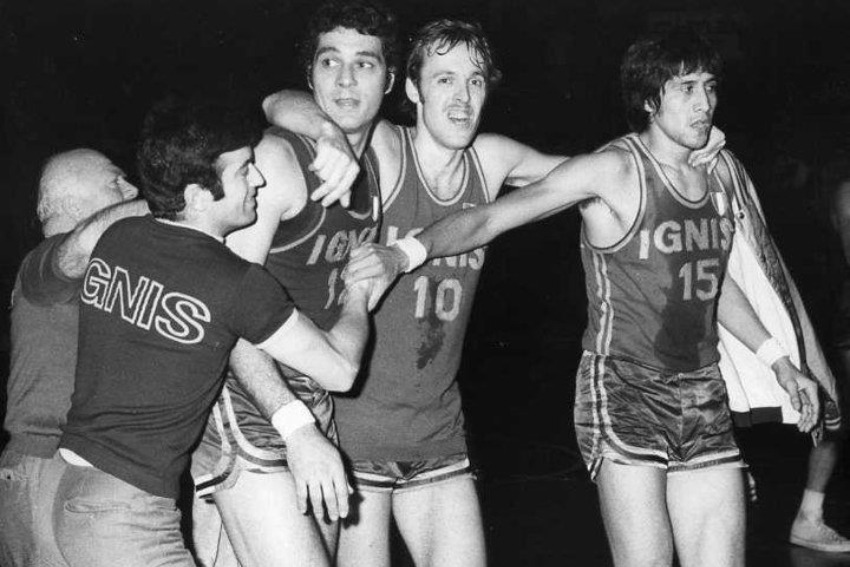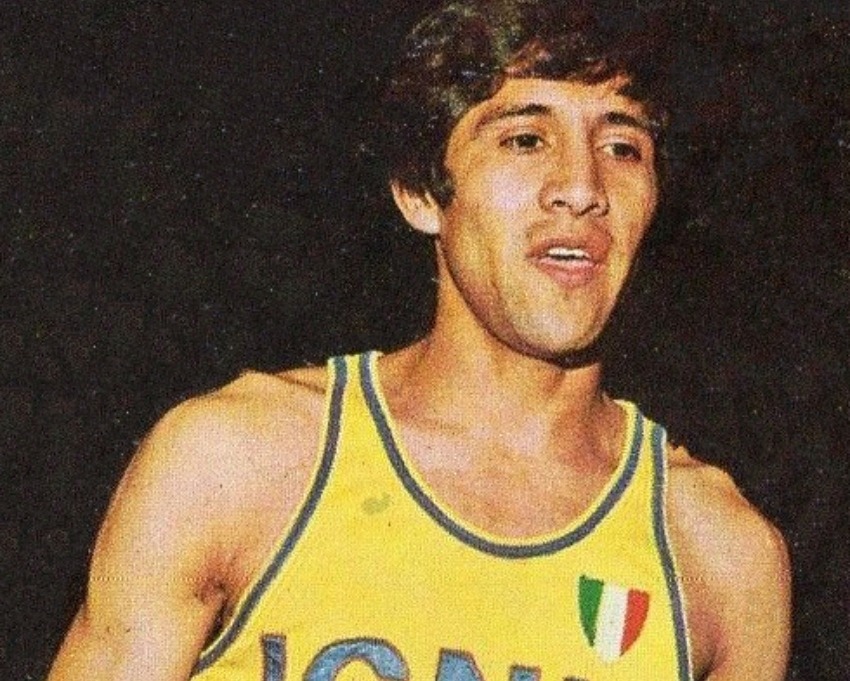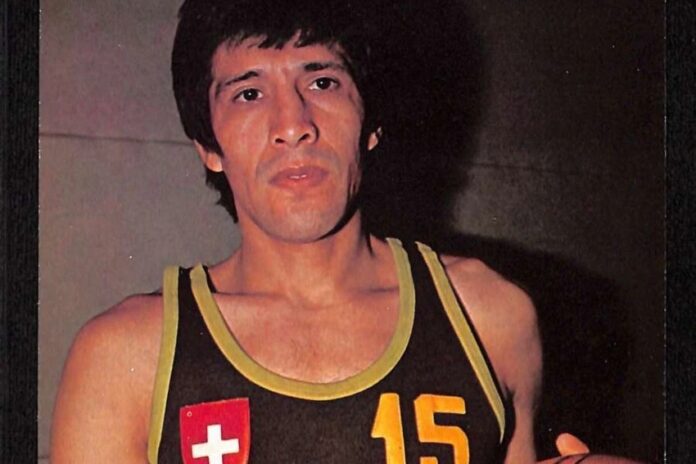Few people, unless they are serious basketball fans, will remember Manuel “Manolo” Raga Navarro. However, he is still considered the most successful Mexican basketball player of all time and is noted as being the first Mexican to be drafted for the NBA. This part of the story, if not a myth, is often misunderstood, but we will address that later.
Born in Villa Aldama, Tamaulipas, in 1944, Manolo started playing in local basketball leagues. Although basketball in Mexico has never acquired the popularity of soccer, it has always had a cult following of players and local fans. Its roots often lie in the poorer regions of the county, in part because the enthusiasm for the sport has been driven by migrant workers returning from the United States with a passion for basketball. Basketball had several advantages over soccer. In mountainous or heavily farmed regions, or in crowded working areas of a city, it required far less space than a football pitch. And, thanks to Mexico’s climate, any small outdoor court that can be constructed is generally usable throughout the year.
How Raga rose to fame

Back in the 1960s, most teams were linked to military, government or educational establishments, and Raga played for the Instituto Tecnológico of Ciudad Madero. Although he was “only” 1.88 meters tall (about 6’2”), that was above average height for a Mexican boy of this generation, and he also had an incredible ability to jump. The recognized measurement of this is the Sargent Jump, leaping upwards from a standing position to see how far you can reach up with your hand. A vertical jump of 70 centimeters (27 inches) is considered above average. Modern basketball players sometimes score over 89 centimeters (35 inches). Manolo is said to have been able to leap an impressive 109 centimeters (42 inches).
Even with this natural ability, Manolo would never have attracted much attention playing in the amateur and regional leagues of the time. What brought him into a brighter spotlight was that the Mexican team was the strongest in the Central American region, regularly qualifying for international events. He was 19 when he made his debut at the 1963 World Championships in Brazil, where he scored 24 points against Canada and 20 against Uruguay. The following year, he made the first of three Olympic appearances. International exposure helped improve his game, and by the time the Olympics came to Mexico in 1968, he was, along with Arturo Guerrero, the star of the Mexican team. His play was noted for covering the whole court, leaping to take rebounds, and having an excellent jump shot.
The Flying Mexican in Italy
Raga needed a challenge beyond Mexico and it was an Italian club that gave him the opportunity. Basketball, at the time, was not widely popular in Europe, but had a reasonable following in Spain and Italy. While not approaching the popularity of soccer, basketball in these countries received a fair amount of news coverage, and with that came sponsorship. The biggest clubs used this money to supplement their squads by signing good American players. Another advantage was that many of the big basketball teams were associated with a major sports club, and these often had world-class facilities.
Varese, where Raga came to play, was different. It was a small town of some 70,000 people in the lakes and foothills of Northern Italy. The community was enthusiastic sports fans, being close to the ski slopes and a center of Italian cycling. The community was too small to support a first-rate soccer team, but building a world-class basketball team seemed an attainable goal. The great Italian team at the time was Simmental Milano, and Varese were already their closest rivals. However, this was a one-sided rivalry; between 1957 and 1967, Milano won 9 titles, Varese 2.
Changing the fortunes of Ignis Varese
Several events in the late 1960s would change this balance. Ignis, a local firm that made kitchen equipment, provided sponsorship. Former player Giancarlo Gualco became the sporting director, bringing a love for the club and a dream of greater success. Dino Meneghin, a two-meter giant, was emerging as the most promising Italian player of his generation. Money was made available to attract foreign stars, and rather than pick some young American just out of college, Gualco took a gamble. He brought in the unknown Manuel Raga Navarro. Italian sports fans in the 1960s were not noted for their cultural sensitivity, and Raga was given the nickname “Indian.” His likeable personality and exciting style of play quickly won the support of the fans, and he became known as “The Flying Mexican” or “The Phenomenon.”
Driven by the Meneghin partnership, Ignis Varese won the Italian League in 1969. “The Flying Mexican” scored 418 points and, more remarkably for a relatively short player, grabbed 98 rebounds. The league title gave Ignis entry to the European Cup. This was the height of the Cold War, and there was a strong East versus West rivalry in the competition. Eastern European teams had the advantage of a system where players had token jobs and could train full-time.
Contesting the European Cup

This coincided with a generation of particularly talented Russian players, men who would controversially take the Olympic title from the USA in 1972. Many of these players wore the colours of CSKA Moscow, the team Varese met in the 1970 final. Staged in a brand new stadium in Sarajevo, Ignis won 79-74 with Raga contributing 19 points. It was here that he met Esma Smais, a player at the local Zeljeznicar club, and a rapid romance and marriage followed.
It was European basketball that brought attention from the NBA team Atlanta, who expressed an interest in signing both Meneghin and Raga. The Italian team wouldn’t consider letting Meneghin go, and Atlanta was not willing to pay the US $35,000 fee that Varese was asking for Raga. However, Meneghin and Raga went into the record books as the first foreign players to be included in an NBA draft.
League titles and international play
The following year, Varese retained their Italian title but lost to CSKA in the European final. 1971-1972, Raga’s third season in Italy, saw Milano win the league, but he notched 20 points as Varese beat Jugoplastika Split for their second European title. There was the feeling that Varese was one player short of a team that could dominate both Italian and European basketball, so they brought in Bob Morse.
Morse was a big man, two meters (6’6”) tall, and he had been a prolific scorer during his college career. He was good enough to play in the NBA, but felt he would always be the sixth man, coming off the bench for a few minutes each game and probably being blamed whenever things went wrong. He was an intelligent and cultured man who saw the possibility of a better life in Italy. A place where the family could sit down and have dinner together without the television playing. He would stay in Varese for nearly a decade, and when he returned to the States, he taught Italian in a local College.
An interlude in Switzerland
The Italian League only allowed one foreign player, and Raga had to be sacrificed. He stayed with the club and played alongside Morse in Europe, where the rules were more relaxed. The 1973 final saw them face CSKA for the third time, and with Morse and Raga combining for 45 points, Varese won 71-66. In 1973-74, they returned to the final for a classic game, which they narrowly lost to Real Madrid. That summer, Raga played for Mexico in the World Championships in Puerto Rico. Helped by the fact that Mexico played in the lower classification section during the second half of the competition, he and teammate Arturo Guerrero were the tournament’s two highest scorers. With Morse established as Varese’s top foreign player, Raga moved on to Switzerland, where he won three championships with Federale Lugano. His international career ended with a third Olympic Games in Montreal in 1976.
A legacy in basketball
In 1991, Raga was an assistant coach on the Mexico national team that won the silver medal at the Pan-American Games in Havana, but he never took to coaching. He now lives quietly in Tamaulipas with his second wife, former Cuban volleyball player Lucia Urgelles. His career is better appreciated in Europe than it is in Mexico. In 2010, he was made an Honorary Citizen of Varese, while FIBA nominated him as one of the “50 Greatest EuroLeague Contributors.” And yes, he is still in the record books as the first foreigner to be included in an NBA draft.
Bob Pateman is a Mexico-based historian, librarian and a life-term hasher. He is editor of On On Magazine, the international history magazine of hashing.
